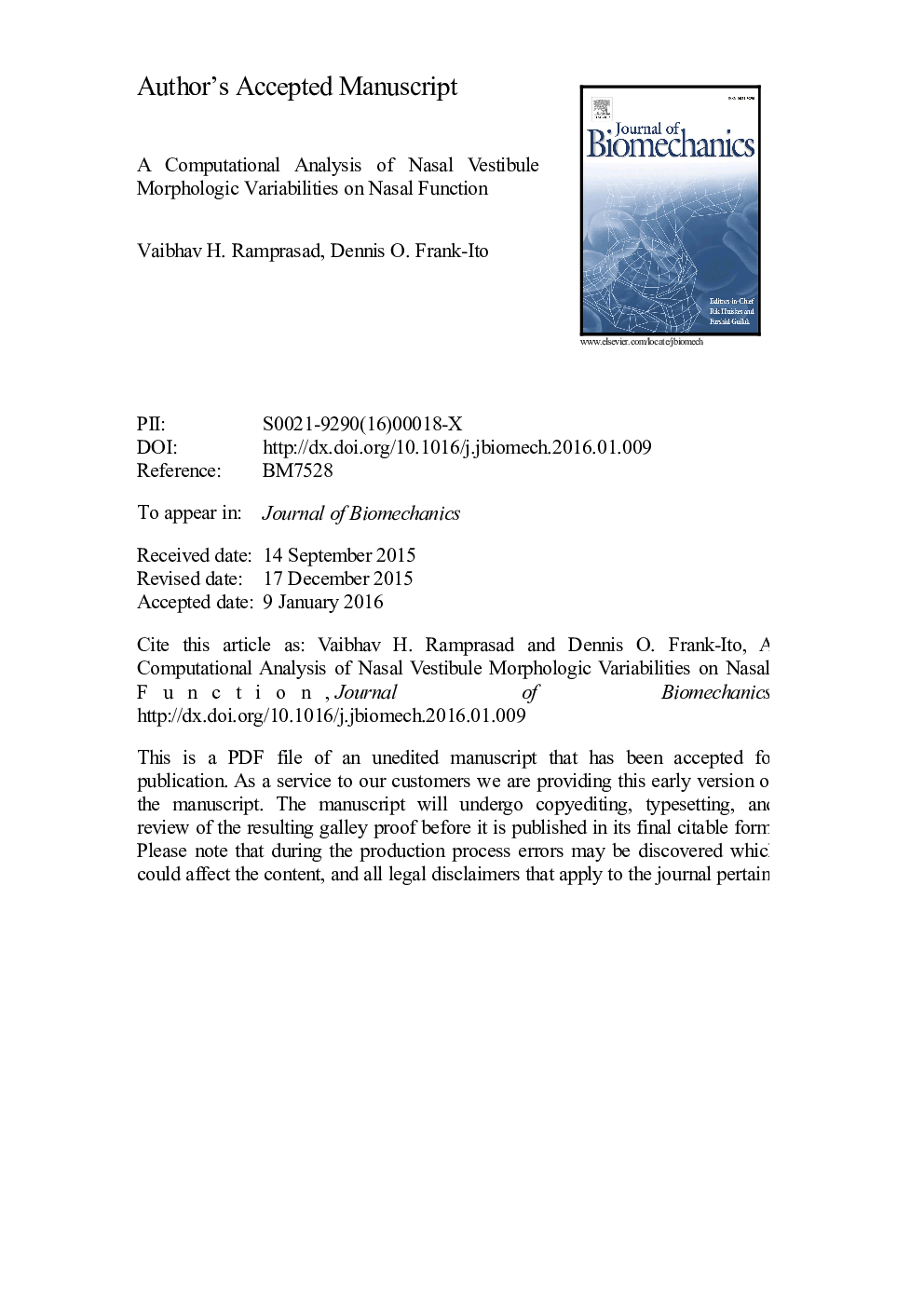| Article ID | Journal | Published Year | Pages | File Type |
|---|---|---|---|---|
| 10431146 | Journal of Biomechanics | 2016 | 32 Pages |
Abstract
Although advances in computational modeling have led to increased understanding of nasal airflow, not much is known about the effects of normal sinonasal anatomic variabilities on nasal function. In this study, three distinct variations in the human nasal vestibule airspace that have not been previously described were identified. Computational fluid dynamics modeling of nasal airflow profile in each identified variation of nasal vestibule phenotype was conducted to assess the role of these phenotypes on nasal physiology. Three-dimensional reconstructions of the nasal geometry in sixteen subjects with normal radiographic sinonasal images were created and each respective unilateral nasal cavity was classified as Notched, Standard, or Elongated phenotype based nasal vestibule morphology. Steady state, laminar and incompressible flow simulations were performed in the nasal geometries under physiological, pressure-driven conditions with constant inspiratory pressure. Results showed that at localized regions of the unilateral nasal cavity, average resistance was significantly different among nasal vestibule phenotypes. However, global comparison from nostril to choana showed that average resistance was not significantly different across phenotypes; suggesting that with normal anatomic variations, the nose has a natural compensatory mechanism that modulates localized airflow in order to achieve a desired amount of global airflow.
Related Topics
Physical Sciences and Engineering
Engineering
Biomedical Engineering
Authors
Vaibhav H. Ramprasad, Dennis O. Frank-Ito,
